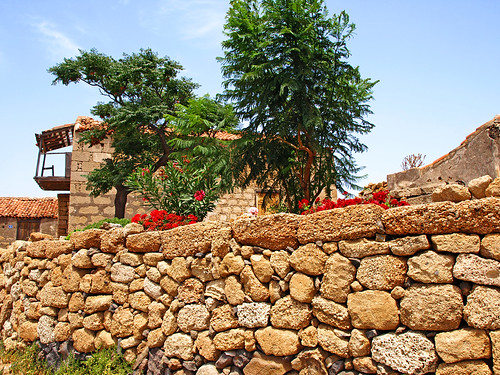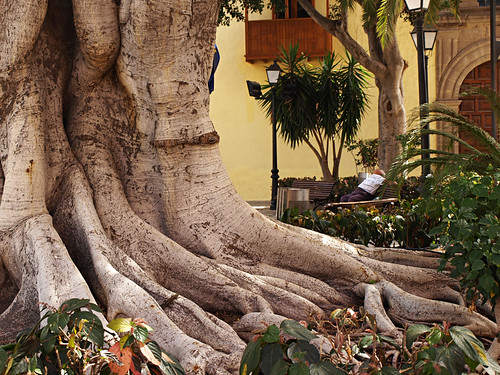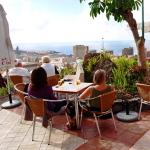A while ago we had a look around some of the resorts on Tenerife’s south coast to check what was new and what had fallen victim to the crisis.
This time we took to the hills above the resorts to discover how life was affecting the small agricultural communities in the south east.
The route along the old road is featured in our Real Tenerife Island Drives guide and I always prefer it to the much quicker but, let’s be honest, dull TF1. Exploring Tenerife by the old roads is a much better way to absorb a feel of island life and the route through the towns, villages and hamlets on the east still exudes bags of character and the relatively modern history that shaped this area. I say modern because the road was only finished towards the middle of the 20th century; a fact which is a story in itself.
Granadilla de Abona

First stop was in Granadilla de Abona, a town that’s got more of a bustle than some of the sleepy settlements in the area. It’s not the prettiest of towns although it has a couple of picturesque streets, a quirky museum and one of my favourite churches on Tenerife, the Iglesia de San Antonio de Padua. But I like Granadilla de Abona. It has an honest, working town character which feels like the real deal. Shops remind me of a bygone age and that has a curious attraction in itself. The last time we were there there was a fascinating exhibition in the Convent San Luis that kept us in town for much longer than we planned. Granadilla de Abona is one of those locations that the more you look, the more you find. With this visit it felt as though the crisis had affected the town; parts seemed slightly neglected; the great little outdoor activities shop next the the church had gone and restaurants had closed. But we did spot one interesting tasca that we hadn’t noticed before and that we will definitely have to try out.
Villa de Arico, Arico Nuevo & Arico Viejo

These are a curious trio. Villa de Arico is the administrative centre and a wander around the area plaza at the Baroque Iglesia de San Juan Bautista with its drago tree and Portuguese bell tower, reveals some interesting views and examples of rural and colonial architecture. I’ve never quite seen any attraction in Arico Viejo, apart from the fact you can pick up some local cheese there. There’s nothing wrong with it, there’s just nothing that makes it stand out.
Arico Nuevo, on the other hand, is the surprise find of the south east. It’s the most perfectly formed historic hamlet that you’ll find in the south and, unlike the other historic towns on Tenerife, there are no modern architectural blots on its immaculate streets. It’s also got a great little tasca, Tasquita el Pimentón in its plaza. It’s such and idyllic and relaxing setting that lunch here might just curtail any further exploration.
Icor

I don’t know what to make of Icor, a tiny hamlet consisting of some of the oldest examples of rural architecture on Tenerife. Two of the first post-conquest residents were allegedly Guanches. The hamlet has never grown beyond more than about a dozen houses over the centuries and the development of tourism in the south drew what little residents it had away from the hard toil of rural living. When we first visited it, there was little evidence of many people living there; it was virtually an abandoned hamlet.
But the economic crisis has had an affect on Icor that might be the opposite of what you’d expect. More people have moved back and there are less abandoned homes; in fact it doesn’t feel abandoned at all any more. It’s something I’ve seen happen in other rural locations in the Canary Islands.
Ironically, it has lost some of its fascinating charm as a result.
Güímar

This trip we didn’t stop at Fasnia, a town that has still got to show me that it’s got something worth stopping for. Instead we headed straight for my favourite town on this stretch of coast; Güímar.
Apart from its controversial pyramids, Güímar has an air that’s absent from every other town south of it. This was the last big town before the road south fizzled out; this was a place rich in proud Guanche tradition where they’d state defiantly to anyone who’d listen ‘Even the poorest Guanche is too good for the most noble Spaniard’. It’s a town with a strong sense of history of which you can feel tucked away historic squares, old water mills and channels, colonial houses, some of which have been turned into rural accommodation, and, of course, at the Pirámides de Güímar.
It’s one of the oldest towns on Tenerife and it’s also set in a beautiful valley.
Güímar simply has more substance than the other towns we visited. There’s a bigger choice of everything; from places of interest to, to leafy plazas, to plenty of attractive cafés and restaurants.
Unlike some other spots, there’s also a sense that when I return in a couple of months there will be even more; an area around one of the plazas (currently having a noisy nip and tuck) already boasts a couple of new stylish tasca/cafés.
Apart from visiting to see the pyramids, Güímar is largely ignored by visitors.
But that’s indicative of Tenerife. Despite the millions of visitors each year, there is so much of it that is still a secret in many ways.




Be the first to comment